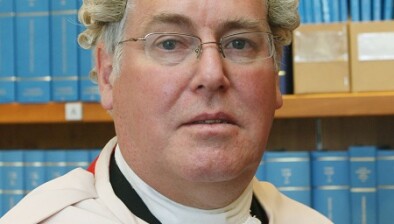Stewart Dunbar: Changes in new trusts and succession law

Stewart Dunbar
The Trusts and Succession (Scotland) Bill was passed at the Scottish Parliament on 20 December 2023 and received Royal Assent on 30 January. Stewart Dunbar looks at two aspects of the Act that impact the individual who created (or plans to create) the trust, known as the truster.
Appointing new trustees
It is essential that a trust has a minimum of one trustee fit and well enough to look after the trust’s affairs. Trusts can last for years, so it is often necessary to appoint new trustees to replace existing trustees who have died, retired or are unable to carry on due to ill-health.
The truster decides who the original trustees are, usually shown within the trust deed itself. It is then up to the trustees themselves to appoint further or replacement trustees. The wording of the trust deed should always be checked, as occasionally the power to appoint new trustees is specifically reserved for the truster during their lifetime, or occasionally it is given to a third party.
As most trust deeds leave this matter to the trustees alone, problems arise when there are no surviving or capable trustees left to arrange the appointment of new trustees – as the Trust’s affairs cannot be managed without trustees. The Act provides the truster with a fall-back power to appoint a new trustee in the scenario where no capable trustee exists or can be traced. Once a new trustee is appointed, that trustee can then assume further trustees and so on, in order to get the trust’s affairs up and running once again.
In the right circumstances, this avoids the time & expense of going to court to have new trustees appointed – which would otherwise be the next port of call for many trusts.
However, trusters and trustees alike should not plan to rely on this power, given that the truster may no longer be alive or mentally capable at the crucial moment. Active and ongoing review of the line-up of trustees is still the best course of action, so that there is always a reasonable number of suitable trustees who can be relied upon.
Appointment of a ‘protector’
For the first time, Scots law will formally recognise the role of a ‘protector’ within a trust. Protectors have long been a feature of other legal systems (particularly England & Wales).
The protector’s role is to oversee the trustees and ensure that they are upholding their duties & responsibilities. The protector will often be given specific powers, which can include the right to veto certain decisions, to direct the trustees to appoint new trustees or even remove existing trustees from office.
The power to appoint a protector lies with the truster. They would do this within the trust deed itself, which would also outline the powers that the protector is to have. The Act does not give any default powers to protectors other than the right to inspect documents held by the trustees, though it does provide a list of powers that are permissible for the truster to provide. The truster is also given the power to appoint a new protector where the existing one has resigned, died or become incapable or untraceable.
Time will tell how popular protectors become within Scottish practice, but they will shortly be ‘on the menu’ for trusters. It is important for trusters to be aware of these changes and their implications before they become law in 2024.
![]()
Stewart Dunbar is a legal director at Gillespie Macandrew. This article first appeared in The Scotsman.








